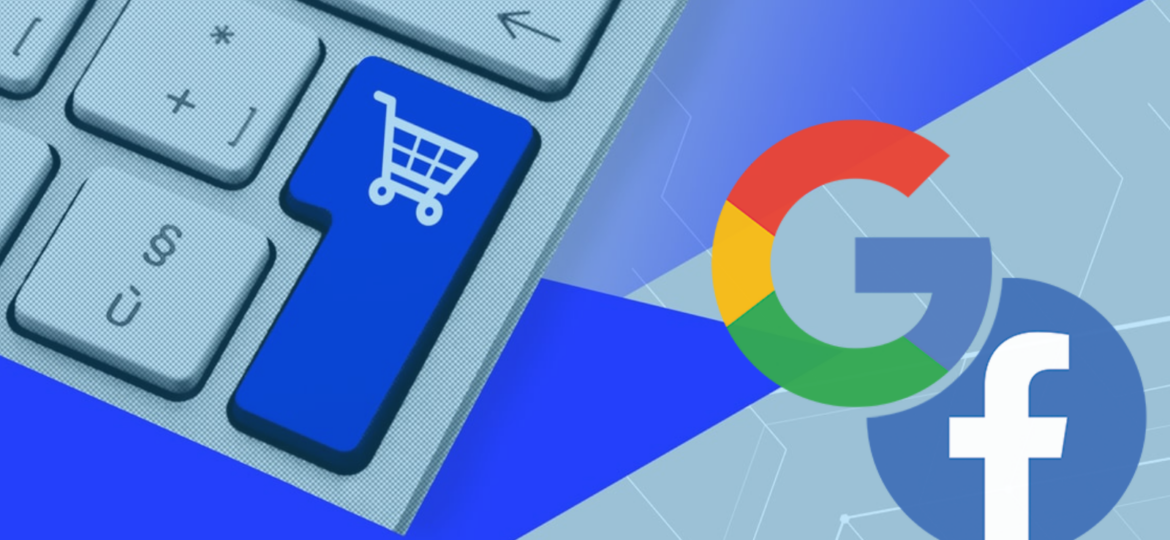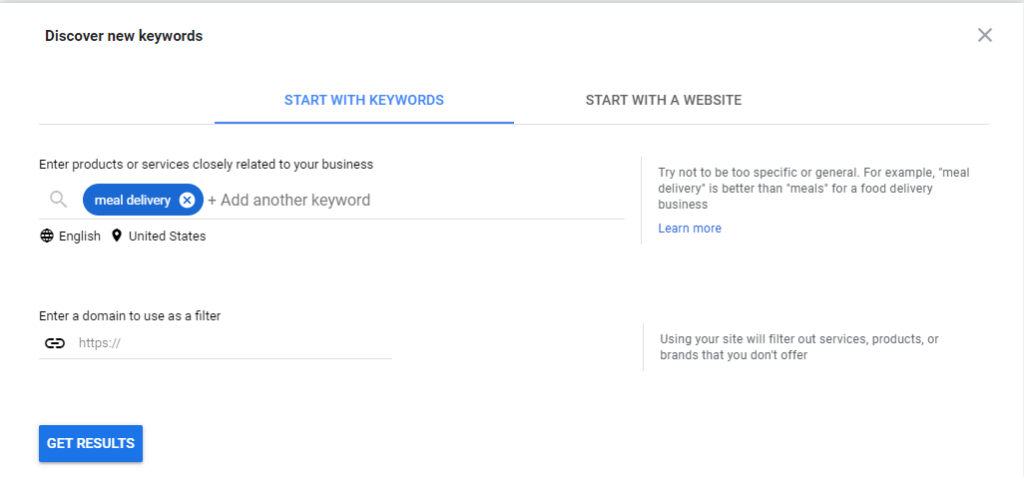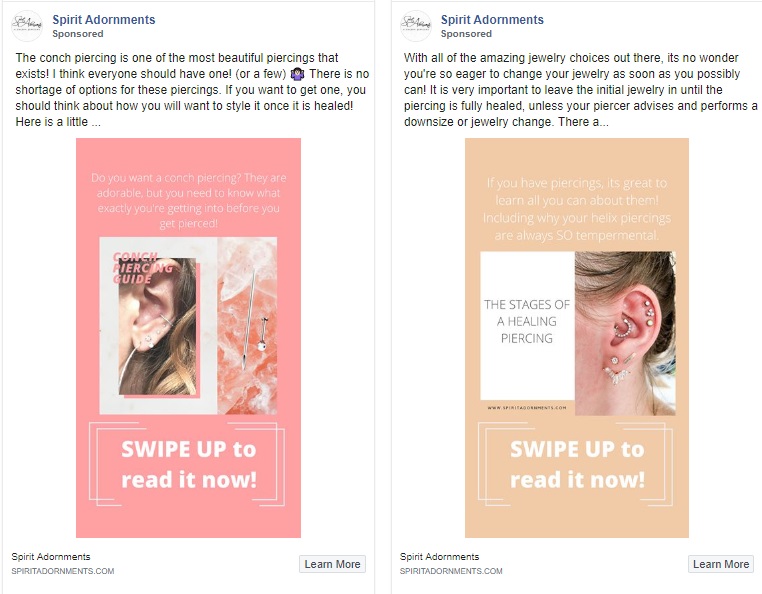
When it comes to advertising your ecommerce store, you have two main options: Google Ads or Facebook Ads. Both platforms are effective at reaching potential customers, but which one is right for your business? In this blog post, we’ll break down the pros and cons of each platform so you can make an informed decision. Stay tuned – by the end of this post, you’ll know exactly which advertising platform is best for you.
What are Google Ads for Ecommerce?
Google Ads is an advertising platform that allows businesses to display ads on Google Search, YouTube, and other Google-affiliated websites. It is the largest online advertising platform in the world, with over 3 million advertisers worldwide using the platform. Google Ads uses a pay-per-click (PPC) model, which means businesses only pay when someone clicks on their ad. The platform offers a variety of features to help businesses target their audience, track their performance, and optimize their campaigns. Some of the most popular Google Ads features include:
Keyword Planner
Google Ads’ keyword planner is a tool that allows you to research keyword ideas and get monthly search volume data for those keywords. You can use keyword planner to:
- Find new keyword ideas for your ecommerce store
- Get traffic estimates for a list of keywords
- Enter or upload a list of keywords to get estimates
- Research keyword ideas by entering a URL, product category, or keyword
- See how difficult it would be to rank for certain keywords
- Get monthly search volume data for a list of keywords

Campaign Goals
Campaign goals are the objectives that you want your Google Ads campaign to achieve. There are four main types of campaign goals: Brand awareness, reach, consideration, and conversion. Each type of campaign goal has different functions and can be more or less effective for ecommerce sales, depending on your product.
Brand awareness goals are designed to get your ad seen by as many people as possible. This is done by targeting people who are most likely to see your ad and selecting keywords that have a high Search Volume but are not too specific. Consideration goals are designed to get people interested in your product or service. This is done by targeting people who have already shown an interest in similar products. Finally, conversion goals are designed to get people to take a specific action. For example, buying a product. This is done by targeting people who are most likely to convert and selecting keywords that are specific to your product.
Ad Extensions
Ad Extensions are a feature in Google Ads that allows businesses to provide more information about their products. For instance, this includes data such as price, product images, and contact information. Therefore, businesses can give potential customers a more complete picture of what they have to offer. In addition, ad extensions can also help to improve click-through rates by making it easier for users to find the information they are looking for. For ecommerce sales, ad extensions can be a valuable tool for driving traffic and increasing conversion rates.
Conversion Tracking
Conversion tracking is a Google Ads feature that lets you measure how well your ad campaigns and keywords are performing. In addition, it lets you see how many people who saw your ad clicked on it and took action that you’ve defined as a conversion. For example, making a purchase. By tracking conversions, you can see which keywords and ad campaigns are driving the most sales and make changes accordingly. Conversion tracking also helps you measure the return on investment of your Google Ads campaigns.
Remarketing
Remarketing is a feature in Google Ads that allows you to show ads to people who have already visited your website. It’s an effective way to reach your target audience and improve your ecommerce sales. Remarketing works by placing a cookie on the user’s device when they visit your site. This cookie is used to track their activity and remarket to them through Google ads. In addition, you can create remarketing lists based on specific criteria. For instance, people who visited a certain page on your site or added items to their cart but didn’t purchase. You can also remarket to people who have engaged with your brand on social media.
Ad Rank and Quality Score
Quality score is a metric that measures how relevant your Google ads, keywords, and landing page are to a person viewing your ad. A high quality score means that your ad is relevant to each other and likely to result in a conversion. A low quality score means that one or more of these elements is not relevant to the others. Therefore, you’re unlikely to see as many conversions as you would with a high score.
Match Types
When it comes to Google Ads, there are three main match types that you can use in your campaigns: broad match, phrase match and exact match. Each of these match types has its own benefits and can be used in different ways to improve your ecommerce sales.
Broad match is the most general match type and will show your ad for any search term that contains your keywords. This includes terms that are not an exact match. This match type can be useful for reaching a wider audience. However, it can also result in your ad being shown for irrelevant searches.
Phrase match is similar to broad match. However, with this match type your ad will only be shown for search terms that include your keywords in the specified order. As a result, your ad is only shown to users who are genuinely interested in what you’re selling. This can help to improve click-through rates and conversions.
Types of Ecommerce Google Ad Campaigns
There are a few different types of Google Ads campaigns that work well for ecommerce websites. These include:
Shopping campaigns
Shopping campaigns are a type of Google Ads that is designed specifically for ecommerce businesses. Unlike other types of Google Ad campaigns, shopping ads do not use keywords. Instead, they rely on product data from your ecommerce website to target ads to shoppers who are interested in your products.
Shopping campaigns can be extremely effective in driving ecommerce sales. As a result, they allow you to reach shoppers who are already interested in what you are selling. Additionally, they can be customized to target specific products, product categories, or even specific search terms. This makes them an extremely versatile tool for driving ecommerce sales.
Display campaigns
A display campaign in Google Ads helps to increase brand awareness and drive traffic to your website. They work by showing your ad on websites and apps that are relevant to your business. In addition, you can target potential customers based on their interests, demographics, and other factors. Display ads can be a great way to improve ecommerce sales as they provide a way to reach a wide audience with your message. Additionally, they can be customized to target specific audiences, which can help to improve conversions.
Search campaigns
A search campaign in Google Ads helps you get your ecommerce site seen by potential customers when they search for relevant terms on Google. The way it works is that you create ads and then bid on keywords that you think potential customers will use when searching for products like yours. Therefore, your ad may appear in the search results. If they click on your ad, they will be taken to your ecommerce site. Furthermore, they can learn more about your products and potentially make a purchase.
Video campaigns
Video campaigns allow you to show video ads to people who are interested in your products or services. Therefore, you can use these campaigns to reach people on YouTube and other video sites. In addition, on websites and apps that partner with Google. Video marketing campaigns can help you increase brand awareness, reach new customers, and boost sales. They work by targeting people based on their interests, demographics, and behaviors. Also, you can target people who have already interacted with your brand. For instance, people who have visited your website or subscribed to your YouTube channel.
What are Facebook Ads for Ecommerce?
Facebook Ads is a powerful marketing tool that allows businesses to target specific audiences with highly relevant ads. The platform has an effective way to reach out to potential customers and generate new leads. In addition, it can be used to promote and sell products or services, to increase brand awareness, or to drive traffic to a website. Similar to Google Ads, Facebook Ads offers it’s own wide range of features. This includes:
Interests
This feature allows businesses to target potential customers based on their interests. For example, if you sell women’s clothing, you can target Facebook users who have expressed an interest in fashion, style, and shopping. This ensures that your ads are seen by people likely to be interested in your products.
Demographics
You can use demographics targeting to reach a specific group of people. Furthermore, you can use it to create a more general ad that will reach a wider audience. Demographics is a useful tool for ecommerce sales because it allows you to target your ad to people likely to be interested in what you’re selling. For example, if you’re selling women’s clothing, you can use demographics to target your ad to women aged 18-24 who live in the United States.
Types of Ecommerce Facebook Ad Campaigns
There are a number of different types of Facebook Ads campaigns that can be used to achieve different objectives for your eCommerce store. This includes:
Brand Awareness Campaign
Brand awareness campaigns on Facebook Ads are designed to increase user awareness of a brand or product. The campaigns work by targeting users who have not previously interacted with the brand, and showing them relevant ads. These ads can take many different forms. However, they all aim to increase brand awareness among the target audience. These campaigns can be highly effective in driving ecommerce sales, as they provide an opportunity to reach a large number of potential customers unfamiliar with your brand. In addition, this campaign can be tailored to target specific demographics, interests, or even locations.
Traffic Campaign
Traffic campaigns are one of the most popular and effective types of Facebook Ads. They are designed to increase traffic and sales to your online store. These ads work by targeting people interested in your products. Facebook then shows your ads to these people when they are likely to be on Facebook. This ensures your ads are seen by the people likely to click on them and visit your ecommerce store.
Engagement Campaign
Engagement campaigns on Facebook Ads are a way to get people to interact with your brand on the platform. The goal is to create ads that encourage users to like, comment, or share your content. Engagement ads are particularly effective for ecommerce brands. By getting users to interact with your content, you are likely to convert them into customers. Additionally, they can help increase word-of-mouth marketing, as users who have a positive experience with your brand are likely to tell their friends about it.
Conversions
By optimizing your campaigns for conversion, you can ensure that your ads are served to people likely to take a specific action on your website. For example, making a purchase. This can be an extremely effective way to boost ecommerce sales. So how do conversion campaigns work? Facebook uses data from your website to track conversion events. For instance, adding an item to a shopping cart or completing a purchase. It then uses this data to create a custom audience of people who have completed these conversion events. You can then target this audience with your ads. Therefore, ensuring that they see relevant and persuasive content encouraging them to make a purchase.
There are a few different ways to set up conversion campaigns. This depends on what type of conversion event you’re tracking. For example, if you’re selling physical products, you’ll need to install the Facebook pixel on your website in order to track conversion events. Once you’ve done this, you can create your campaign and start driving sales.
Product Catalog Sales
A product catalog sales campaign includes ads that are generated from an online product catalog. They are used to drive sales on an ecommerce website. Facebook Ads product catalogs allow stores to upload their entire product inventory to the platform. Furthermore, you can create dynamic ads that showcase the products. The product catalogs are connected to the Facebook pixel. Therefore, allowing ecommerce store owners to track conversions and optimize their product ads for maximum ROI.
ecommerce ads – google vs facebook: The Differences
While Google Ads and Facebook Ads may both be effective tools for promoting ecommerce stores, there are some key differences between the two platforms. Google Ads is a pay-per-click platform. Therefore, advertisers only have to pay when someone clicks on their ad. Facebook Ads, on the other hand, operates on a pay-per-impressions basis. Therefore, this means that businesses are charged based on the number of people who see their ad.
One key difference between Google Ads and Facebook Ads is the way that each platform targets users. For example, Google Ads allows eCommerce store owners to target people by their location, demographics, interests, and even previous searches. In addition, they can can target users based on keywords that they search for on Google.com. With Facebook Ads, eCommerce store owners can target users based on their location, age, gender, interests, and behaviors.
Finally, Google Ads and Facebook Ads differ in terms of pricing. Google Ads operate on a pay-per-click basis. Therefore, your business only pays when someone clicks on their ad. Facebook Ads operate on a pay-per-impression basis. As a result, businesses pay each time their ad is shown to a user, regardless of whether the user clicks on it or not.
Google Ad Networks
Google offers a variety of ad networks that can be used to advertise ecommerce stores. This includes:
YouTube
YouTube is the largest video sharing website in the world. According to Statista 2022, over 2.6 billion people worldwide use YouTube on a monthly basis. The platform offers a number of features that make it attractive for ecommerce sales. YouTube provides stores with the ability to target ads to specific demographics, interests, and even geographical locations by using video ads. Therefore, allowing them to better target their ads to potential customers likely to be interested in their products.
Google Search Partners
Google Search Partners are a network of websites that partner with Google to show ads. For example, this includes popular websites such as AOL, Ask, and Yahoo. This feature can be beneficial for ecommerce sales because it allows you to reach a wider audience and potential customers.
Google Display Network
Google Display Network is a network of websites that display Google ads. This includes popular websites such as Amazon, ESPN, CNN and others. These ad networks provide a way to reach potential customers on a variety of platforms, and they offer a variety of options for targeting and customizing ads. By using these networks, ecommerce stores can improve their visibility and reach a larger audience.
Facebook Ad Networks
Facebook also offers a variety of ad networks that can be used to advertise ecommerce stores. These include:
Instagram is a visual social media platform with over 1 billion monthly active users. It can be effective for ecommerce stores, as it provides a visually-rich environment where they can showcase their products, reach large audiences and drive sales. In addition, Instagram has a built-in payment system that makes it easy for customers to purchase products directly from a store’s post. For online stores looking to drive sales through social media, Instagram is an essential platform.
Facebook’s Audience Network
This network allows businesses to target specific audiences with highly relevant ads. This is perfect for businesses that want to reach a specific group of people with their message. For example, businesses can target people who live in a certain area or who have expressed interest in similar products.
Facebook Feed
Facebook’s News Feed is the constantly updating list of stories in the middle of your home page. Facebook determines which stories to show you by using an algorithm that takes into account how popular the content is, who posted it, whether you’ve liked similar content in the past, and other factors. Facebook Ads appear in News Feed, and just like promoted posts from Pages, they can be targeted to specific demographics, interests and even categories of people.
Each of these Facebook ad networks has its own advantages, and ecommerce store owners should carefully consider which one is right for them.
Audience Sizes
Google and Facebook are two of the most popular online advertising platforms for ecommerce. Both have a large user base and offer a variety of services. However, there are some key difference between the two in terms of audience size.
Google has over two billion active monthly users. This includes users of all its products, such as Gmail, YouTube, and Google Search. In comparison, Facebook has around 2.23 billion monthly active users. However, it’s important to note that these users are primarily accessing the platform through mobile devices.
When it comes to reach, both platforms are quite large. However, Google may have a slight edge due to its diverse product portfolio. Additionally, Google is the dominant search engine, which gives it a lot of control over the flow of traffic on the internet.
In terms of advertising, both platforms offer opportunities for ecommerce stores to reach their target audiences. However, Facebook may be slightly better equipped to target ads due to its vast pool of user data. Based on interests and demographics, Facebook can provide laser-focused targeting that helps to ensure that ads are seen by those who are most likely to convert.
Overall, both Google and Facebook offer a lot of potential for ecommerce stores in terms of audience size and reach. However, Facebook may have a slight advantage when it comes to targeting ads and generating conversions.
Return on Investment
We’ve learned that both Google and Facebook ad platforms offer a variety of ad types that can be customized to reach a specific audience. However, which platform is better for an ecommerce store in terms of cost and return on investment?
To answer this question, we need to look at some statistics. Google ad spending in the United States has reached past $40 billion in 2021, while Facebook could look to net over $65 billion in ad revenue by 2023.. In terms of cost per click, Google ads tend to be more expensive than Facebook ads. The average cost per click for a Google ad is $2.32, while the average cost per click for a Facebook ad is $0.97. However, it’s important to note that Facebook ads have a higher click-through rate than Google ads. Therefore, you may get more bang for your buck with Facebook ads in terms of getting people to actually see your ad and click on it.
So what does this all mean in terms of ROI? While every ecommerce store is different, overall, businesses tend to see a better ROI from Facebook ads than from Google ads. One reason for this is that Facebook ads are more targeted than Google ads. With Facebook ads, you can target people based on their interests, demographics, and even their purchase history. This means that your ad is more likely to be seen by people who are actually interested in what you’re selling, which leads to better ROI.
To sum up, both Google and Facebook offer advantages and disadvantages for ecommerce stores in terms of cost and ROI. However, overall, ecommerce store owners tend to see better results from Facebook ads than from Google ads.
Shopper Intentions
When it comes to shopper intention, both Google and Facebook Ads are strong contenders for ecommerce stores looking to convert a sale. However, there are some key differences between the two platforms that can make one more advantageous than the other depending on the product or service being sold. For example, Google Ads tend to be more effective for shoppers who have a specific product in mind and are actively searching for it online. Facebook Ads, on the other hand, are better suited for targeting potential customers based on interests and demographics. As such, Facebook Ads may be more effective for products or services that require a bit more explanation or convincing. Ultimately, the best platform for converting a sale will depend on the specific product or service being sold as well as the target audience.
Google Ads vs Facebook Ads for Ecommerce: Which is Better?
Google Ads and Facebook Ads. Both have their pros and cons, and ultimately the best platform for a given ecommerce store will depend on a variety of factors.
One key factor to consider is the target audience. If the ecommerce store is targeting consumers who are likely to be doing a lot of online shopping, then Google Ads may be a better option. This is because Google is the dominant search engine, and shoppers who are looking for specific products are more likely to begin their search on Google. On the other hand, if the ecommerce store is targeting a more general audience, then Facebook Ads may be a better option. This is because Facebook has a large user base, and ads can be targeted specifically to various demographics.
Another important factor to consider is the types of products being sold. If the ecommerce store sells products not easily found through a Google search (such as custom-made items), then Facebook Ads may be a better option. On the other hand, if the ecommerce store sells products that are easily found through a Google search (such as mass-produced items), then Google Ads may be a better option. This is because potential customers who are searching for these types of products on Google will be more likely to see the ad and click through to the ecommerce store.
Finally, advertisers should consider their budget when choosing an advertising platform. Google Ads can be very expensive, particularly if advertisers are targeting competitive keywords. On the other hand, Facebook Ads can be very cost-effective, especially if advertisers are able to target their ads narrowly. As such, ad budget will be an important factor in determining which platform is best for a given ecommerce store.
Final Thoughts





